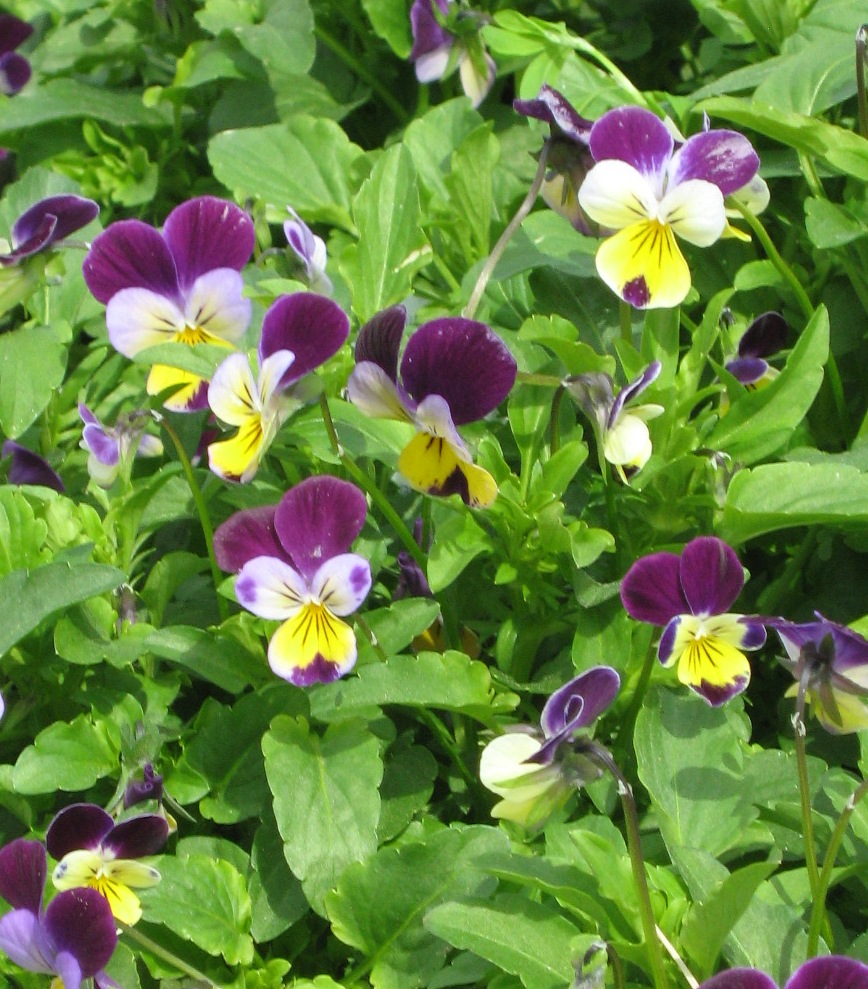Decorative, Culinary, Medicinal. Violas are all three! Of course, they may be best known as a decorative perennial or biennial. The cold tolerant flowers will bloom even through a light freeze (down to 29 degrees Fahrenheit), which makes them a no-brainer for early spring and late fall container planting. Did you know that we are not frost free in SE Wisconsin until late May? Paired with daffodils and willow branches, violas are a happy harbinger of spring. Paired with chrysanthemums, and ornamental cabbage they make a long-lasting farewell to fall.
Violas have a long history as a culinary ingredient. As early as the Roman Empire, violas have been mentioned in recipes. The 17th century the English recognized their deliciousness in salads. And during the Victorian era Violets were candied and preserved. Even Queen Victoria and her mother made violet tea and syrup. Today violas can be used to decorate punch bowls and desserts or used as a garnish for salads and soups. They can even be candied.
Possibly the best violet for culinary use may be Viola odorata or Sweet Violet. They have a strong, sweet floral taste and are best for crystallizing, used plain in desserts, salads, and tea sandwiches. Sweet Violet has been used in perfumery for over 1500 years!
Interestingly, members of the viola family have anti-inflammatory properties. As early as the 1st century A.D. violets were noted to “cool” inflammation of the stomach and eyes. By the 16th century, one source noted more than a dozen medicines which used the leaves or flowers of the violet. The Cherokee people used the common wood violet (Viola sororia) to treat colds and headaches.
Today, herbalists use violets to treat coughs, colds, mucus, skin problems such as eczema and psoriasis, UTI’s, and arthritis and rheumatism, which are all inflammatory conditions.
Of course, if you are going to use violas for culinary or medicinal purposes, make sure they have not been treated with any chemicals.

